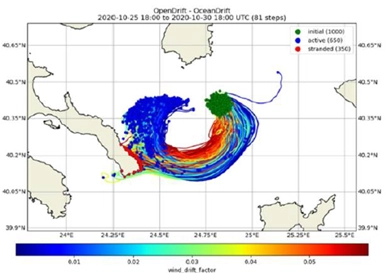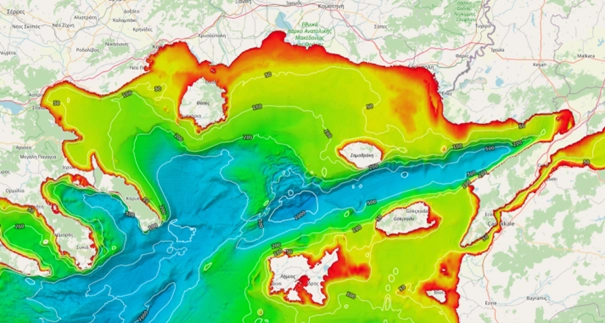Model an oil pollution scenario and its impact on the environment
Mission : ILIAD| Year : 2023-2024 | Stakeholders : European H2020 project
Purpose of the study
The ILIAD project aims to establish interoperable, data-intensive and cost-effective digital twins of the ocean. It takes advantage of the explosion of new data provided by many different sources, including data from the SeaExplorer.
A digital twin of the ocean enables experts to develop simulation scenarios, analysing the impact of prevention and adaptation measures to various events (new coastal construction, climate change, pollution, etc.).
As part of the digital twin created for Greece, the aim is to model an oil pollution scenario and its impact on the environment. To understand the impact, we need to understand the environment, and in particular the bottom of the trophic chain: phytoplankton and zooplankton.
This was the role assigned to the SeaExplorer, which explored the Athos and Tracian sub-basins in both winter and summer. Although separated by less than 20 km, these deep waters are distinct biological zones, and the presence of seamounts encourages the mixing of deep waters with surface waters and improves primary productivity.

Our gliders deployed by our team
During the 2 deployments, which each lasted a month, this glider was equipped with numerous sensors, two of which were particularly important for this study :
- A SeaBird FLBBCD for measuring the fluorescence of CHlA (phytoplankton)
- A UVP6 from Hydroptic for photographing zooplankton
- Nortek’s AD2CP, which measures currents directly using an algorithm developed by Alseamar and available to the scientific community.
Observed results
The data was studied by Alseamar scientists and also by our partners at the Democritus University of Thrace (DUTH).
From a technological point of view, this study has enabled us to demonstrate the ability of gliders to measure zooplankton using the UVP6 and to participate in the collection of scientific data needed to operate a digital twin of the Ocean. Most of these data are integrated into the CORIOLIS database, which also distributes data from profiling floats.
